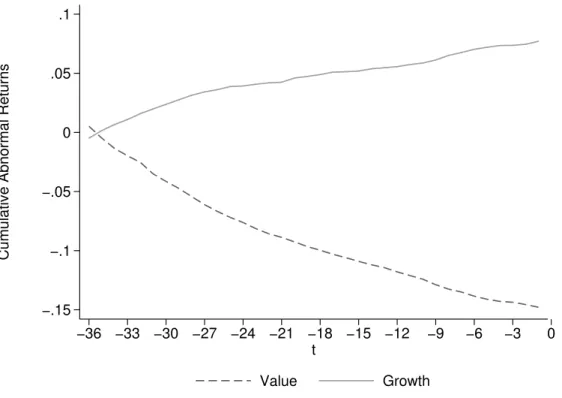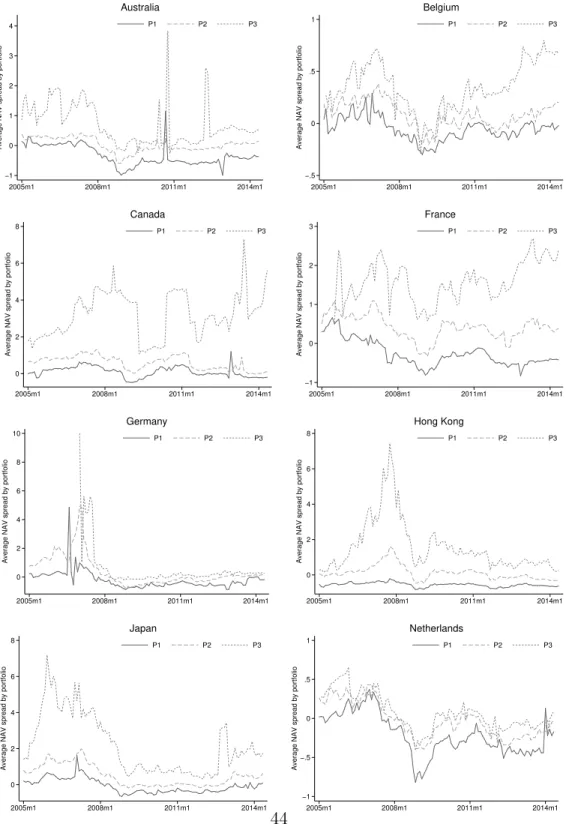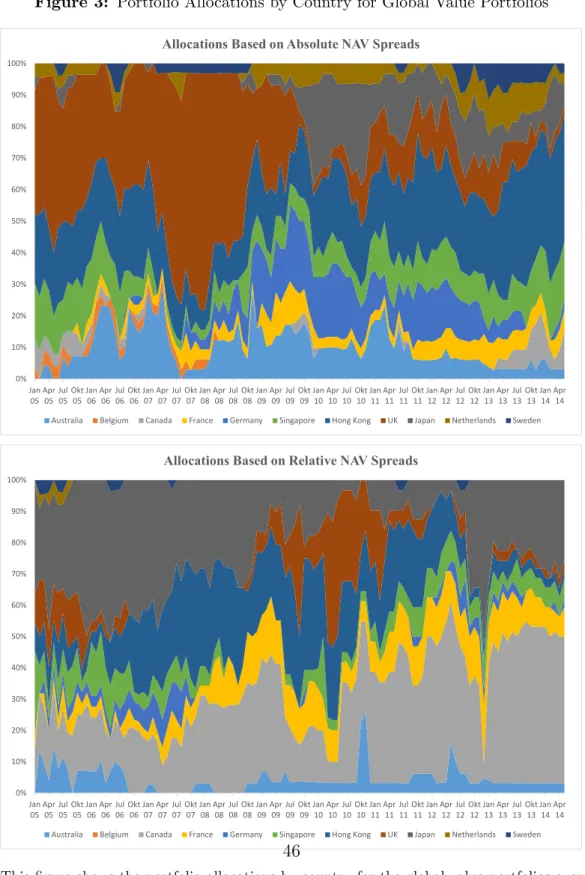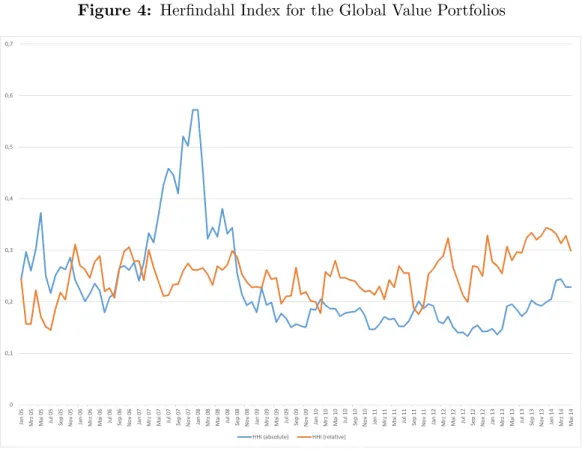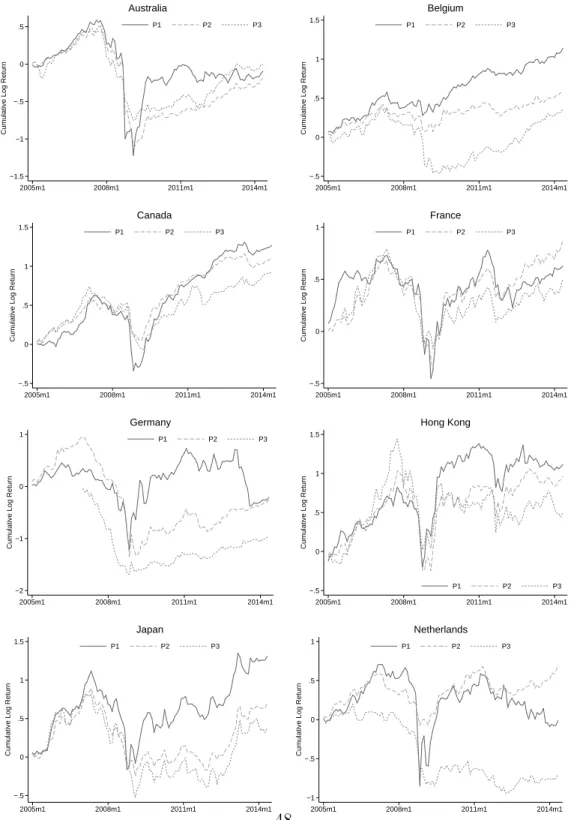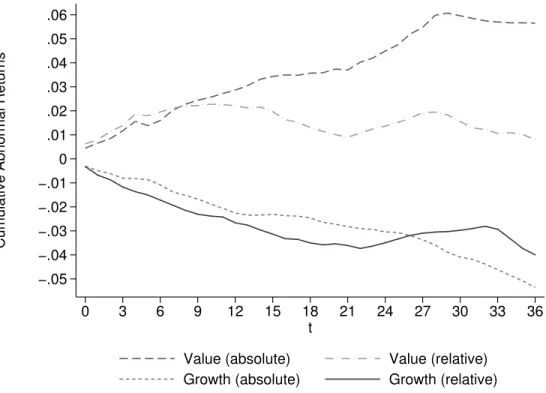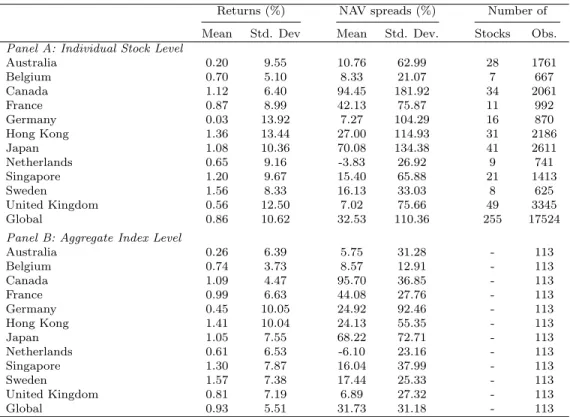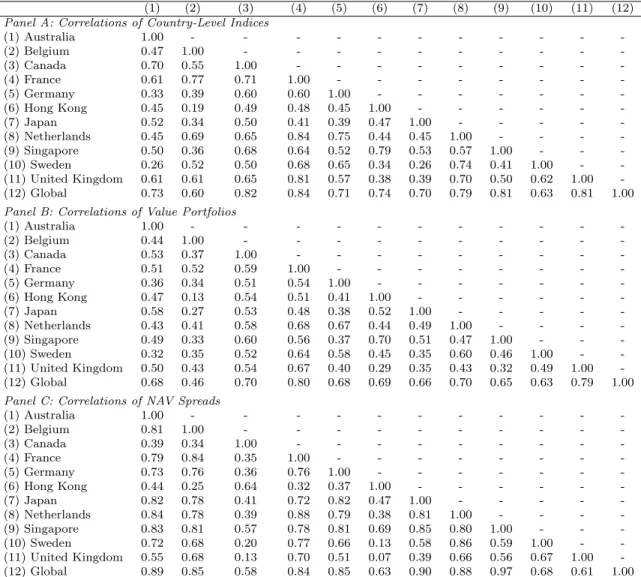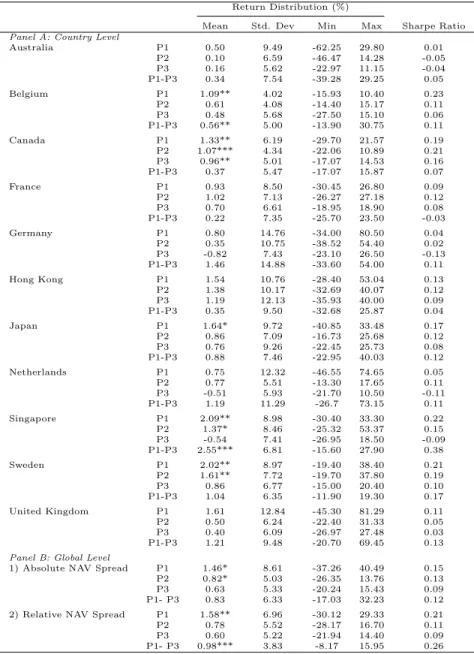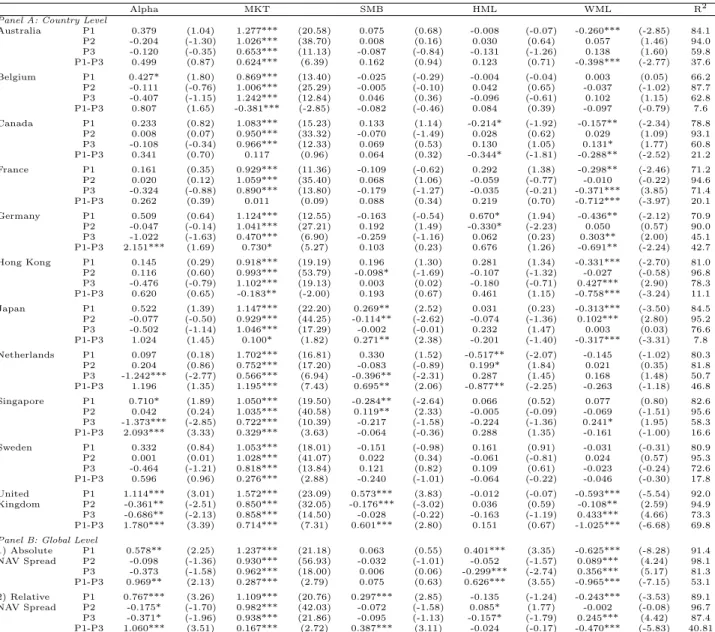Capturing the Value Premium – Global Evidence from a Fair Value-Based Investment Strategy
Ren´ e-Ojas Woltering 1
University of Regensburg
Christian Weis
University of Regensburg
Steffen Sebastian
University of Regensburg
Felix Schindler
Steinbeis University Berlin
Abstract
This paper examines the risk premium of value stocks within a global investment strategy frame- work. We test whether absolute or relative mispricing is better suited to capture the global value premium by using fair value-based net asset values (NAVs) as our proxies for fundamental value.
We find that investing in the most underpriced stocks relative to the average ratio of price to fun- damental value in a country is the key to achieving superior risk-adjusted returns. The annualized excess return of the global value portfolio sorted according to relative mispricing is 10.0%, and remains significant after controlling for common risk factors.
JEL classification: G11; G12; G14; G15
Keywords: Global Diversification, Net Asset Value, Investment Strategy
1
